Pasadena Heritage; Women's City Club of Pasadena; Edmund Blinn House
Introduction
Text-to-speech Audio
Constructed between 1905 and 1906 for the family of lumber baron Edmund Blinn, this was the location of the Women's City Club of Pasadena for decades and is now the headquarters of Pasadena Heritage. The mansion was the retirement home of a Midwestern lumber baron and his wife. After his death in 1922, Mrs. Blinn resided in the home until she sold it in 1941. The building was purchased by a newly established nonprofit women's club in 1945 and remained in their hands for over seventy years. In 2021, the club dissolved and transferred ownership of the house to Pasadena Heritage. In 2001, the Edmund Blinn House became an entry in the National Register of Historic Places for its distinctive Prairie School architectural style and connection to Midwestern architect George Washington Maher. The building is also a Pasadena Cultural Landmark.
Images
Photo of Edmund Blinn House from July 1907 Inland Architect article (photographer unknown)
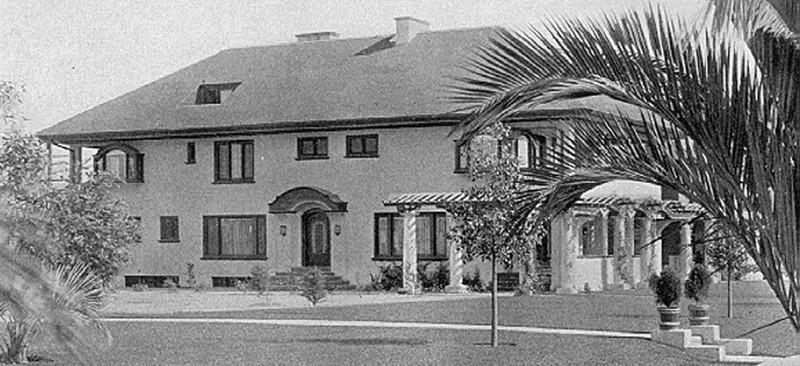
Front (west side) of Blinn House in 2000 NRHP photo (William Thayer)
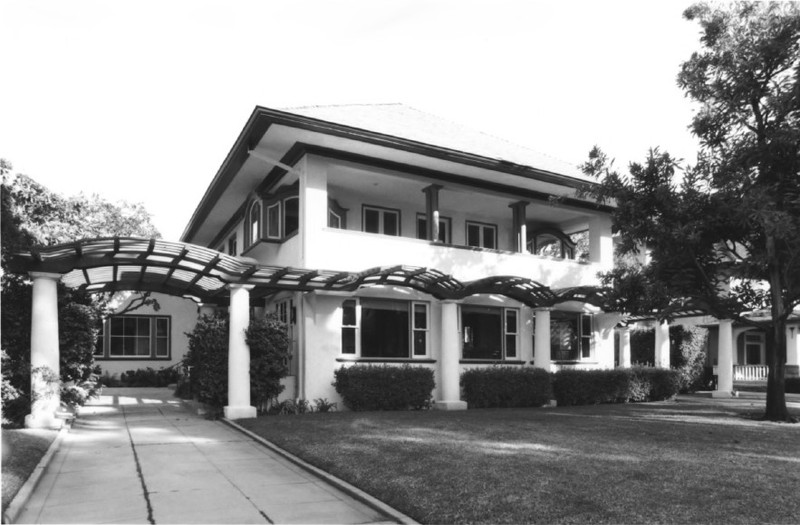
Front entrance into Blinn House in 2000 (Thayer)
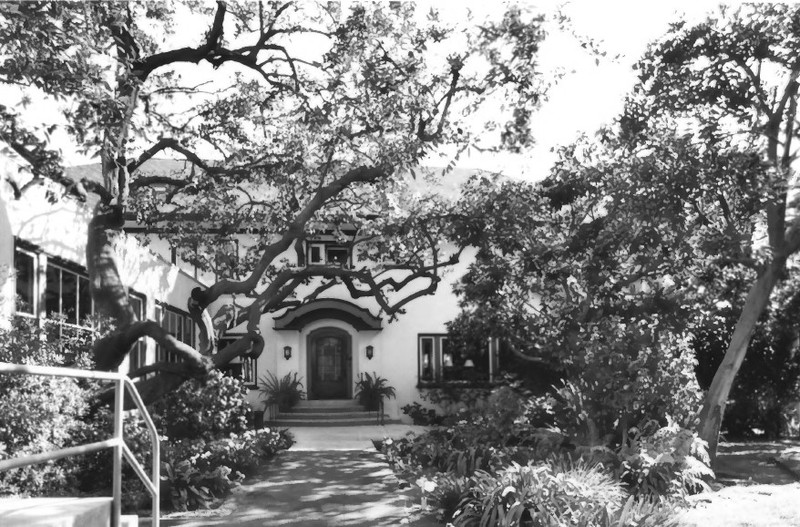
Southeast corner of Blinn House in 2000 (Thayer)
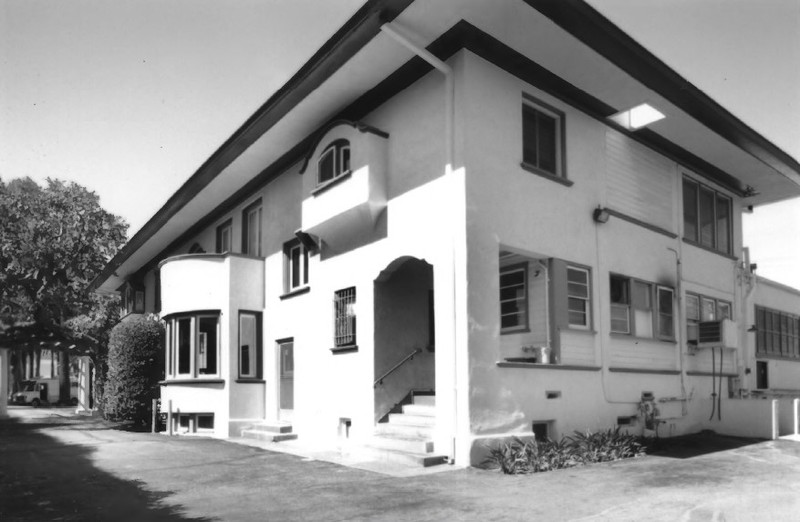
Sliding glass doors in water lily/wisteria motif leading to garden room of Blinn House (Thayer 2000)
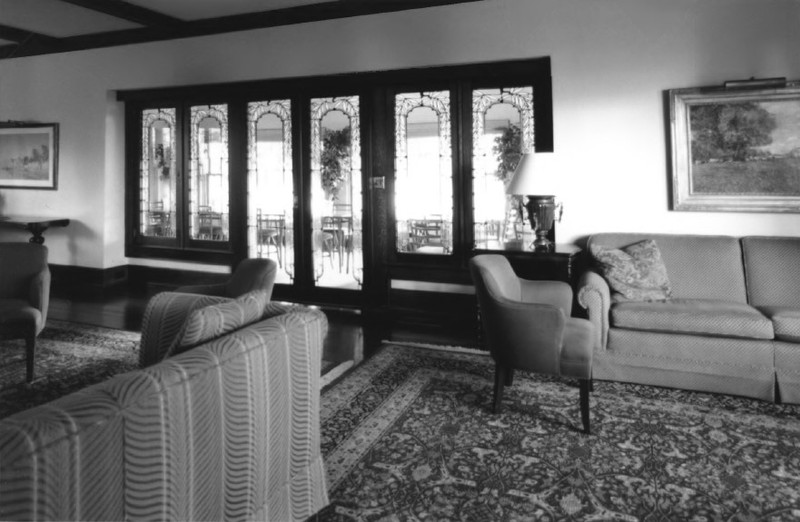
Shallow arched window & window seat in front bedroom of Blinn House (Thayer 2000)
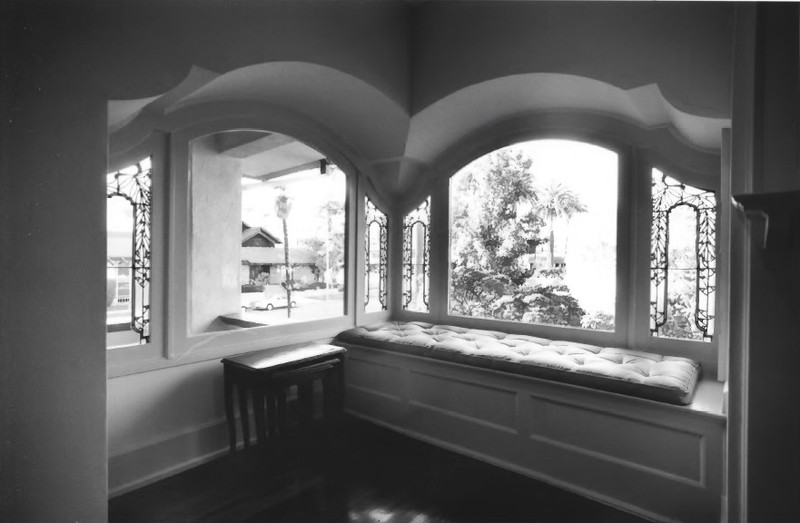
Carriage house at the Blinn House in 2000 (Thayer)
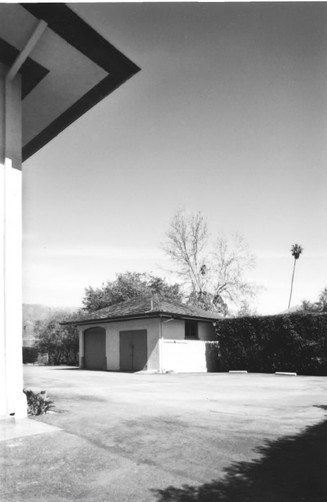
Backstory and Context
Text-to-speech Audio
Edmund Beardsley Blinn (1861-1922) was a New York-born lumber baron who moved to Chicago as a child. He married Kate May Hoch of Iowa in 1885. Blinn semi-retired from his successful wholesale lumber business in Chicago, E. B. Blinn Lumber Company and moved to Pasadena after spending two winters there. Blinn's brother, L. W., also had been in the lumber business and resided in Los Angeles. Architect George Washington Maher designed the Edmund Blinn House in the Prairie School style that was fashionable in Chicago but uncommon in California. The two-story, wood frame stucco-covered mansion measured about 85 by 35 feet and was constructed in 1905 to 1906 in an exclusive subdivision that was established in 1902.
The house was featured in an architectural magazine published in 1907 (excerpts are included in the National Register nomination, linked below). Besides the usual rooms, the Edmund Blinn home featured a library, wine closet, billiard room, five bedrooms, and a sewing room. The house's interior carried on some of the exterior motifs of a water lily or wisteria in stained glass and a segmental arch. The shallow segmental arch with projecting ends was one of architect Maher's signature elements. Due to Mr. Blinn's connection to the lumber industry, the home's interior was accented in mahogany and oak in flooring, wainscoting, tall baseboards, and box-beamed ceilings.
While in Pasadena, Edmund Blinn served as Director of the Union Oil Company of California and the First National Bank of Pasadena. The Marbelite cement lamp posts used in Los Angeles were manufactured by a company headed by Blinn, the American Cement Products Company. The Blinn House remained in the family for over three decades. After Mr. Blinn's death in 1922, Mrs. Blinn resided there until 1941.
Gloria Gartz, a wealthy local philanthropist, purchased the house from Mrs. Blinn in 1941 to help ensure its preservation. Gartz then turned the house into a clubhouse and invited various women's clubs to meet there. The house was across the street from the University Club, which excluded women. As many as thirty clubs met at what was renamed the Women's Clubhouse. In 1945, the Women's City Club of Pasadena, a newly incorporated non-profit, purchased the building for their headquarters. The club allowed individual women to join but also accepted other women's clubs as members.
The club made a few alterations during their ownership, including the addition of a one-story wing/dining room on the building's northeast corner in 1946 and the enclosure of the front porch with glass to create the "Garden Room" in 1964. The original landscaping on three sides of the house was replaced with asphalt parking; the remaining facades were landscaped with trees, flowering shrubs, and ferns. The lone outbuilding, a wood frame carriage house, remains in an altered condition. Like the house, it was covered with a hipped roof.
The Blinn House is the only known example of architect Maher's work on the West Coast, except for a combined water tower/library building in Fresno which was built in 1894. It is the earliest Prairie-style home in Pasadena. Another house (La Miniatura), designed by famed architect (and former co-worker of Maher) Frank Lloyd Wright, dates to 1923. In the mid-1990s, the Blinn House underwent major restorations and structural work. It was listed in the National Register in 2001 and became the headquarters of Pasadena Heritage in 2021 after the Women's City Club dissolved.
Pasadena Heritage replaced the roof and upgraded electrical, HVAC, and plumbing systems and continues to offer the Blinn House as a meeting place for many of the same community groups. The mission of Pasadena Heritage is to preserve and protect Pasadena's architectural and cultural resources through advocacy and education. Blinn House also is a Pasadena Cultural Landmark and part of the Ford Place Historic District.
Sources
Gregory, Tim. NRHP nomination of the Blinn House, 160 N. Oakland St., Los Angeles [sic - Pasadena], California. National Register. Washington, DC. National Park Service, 2001.
Pasadena Heritage. Blinn House: Pasadena Heritage's Headquarters, Pasadena Heritage. January 1st, 2023. Accessed August 9th, 2023. https://pasadenaheritage.org/blinn-house/.
Pasadena Heritage. The Historic Blinn House, Pasadena Heritage. January 1st, 2023. Accessed August 9th, 2023. https://pasadenaheritage.org/blinn-house-2/.
https://en.wikipedia.org/wiki/Edmund_Blinn_House#/media/File:Blinn_Residence_Maher_architect.JPG
National Park Service (NPS): https://npgallery.nps.gov/AssetDetail/NRIS/01000329
NPS: https://npgallery.nps.gov/AssetDetail/NRIS/01000329
NPS: https://npgallery.nps.gov/AssetDetail/NRIS/01000329
NPS: https://npgallery.nps.gov/AssetDetail/NRIS/01000329
NPS: https://npgallery.nps.gov/AssetDetail/NRIS/01000329
NPS: https://npgallery.nps.gov/AssetDetail/NRIS/01000329
